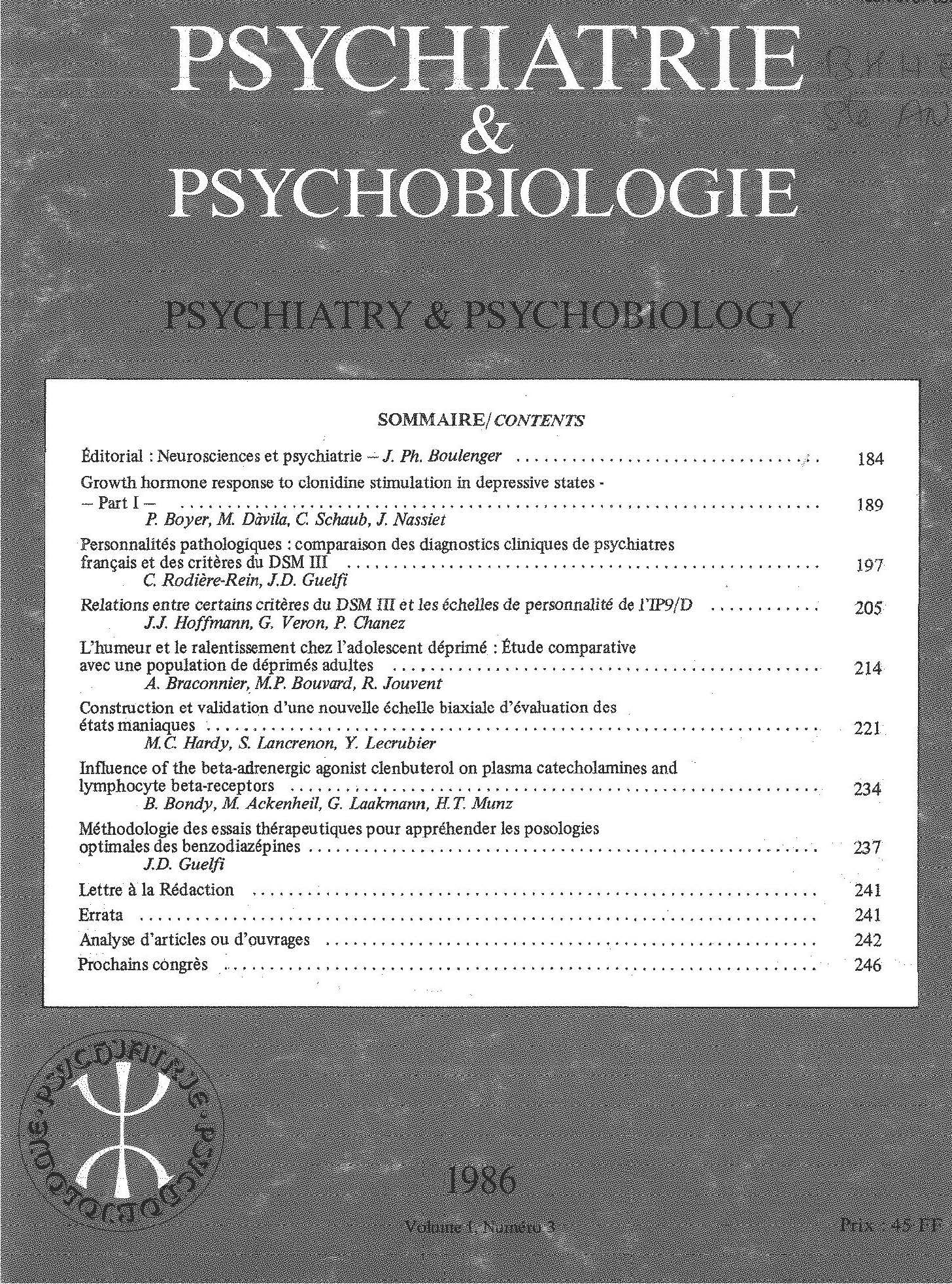No CrossRef data available.
Article contents
Sérotonine et dépression: psychopathologie dimensionnelle
Published online by Cambridge University Press: 28 April 2020
Résumé
L’approche nosologique - classique en psychiatrie - n’est plus pertinente pour la dépression. Des paramètres biologiques mettent en évidence l’existence de différentes dimensions dans cette pathologie, dont certaines, liées à des modifications du fonctionnement sérotoninergique, sont sensibles à des produits modifiant ce fonctionnement. Le fait que le traitement de patients obsessionnels par benzodiazépines apporte une amélioration de la symptomatologie anxieuse s’exprimant au niveau neurovégétatif mais a tendance à aggraver les obsessions donne à penser que le médicament reste un des meilleurs outils pour une identification pertinente de dimensions transnosologiques.
Summary
A nosographic approach, although classical in psychiatry, seems to no longer be relevant in the field of depression. In this kind of pathology, some biological dysfunctions are probably linked with particular behavioral dimensions. Among those dimensions certain ones seem to be modified by compounds active on the serotonergic (5HT) system, evidencing the relationships which can exist between SHT and a cluster of “depressive” symptoms. In a different way, benzodiazepines, if effective on peripheral anxious symptomatology in obsessive compulsive disorder (OCD), are frequently worsening obsessions themselves. Thus, it appears that psychoactive drugs are the best tools to identify the most relevant dimensions of psychopathology.
- Type
- Article Original
- Information
- Copyright
- Copyright © European Psychiatric Association



Comments
No Comments have been published for this article.